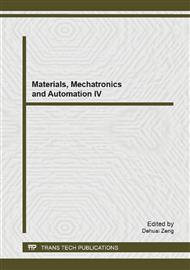p.79
p.86
p.91
p.93
p.96
p.103
p.109
p.114
p.119
An Investigated of Single Point Incremental Forming Formability
Abstract:
An industrial application of single point incremental forming (SPIF) process is dramatically increasing due to the flexibility and economically of the SPIF process. In this paper, the maximum wall’s incline angle without tearing of the SS400 steel formed sample was investigated as the SPIF formability. The SS400 steel sheet 0.8 mm thickness was formed into the 100 mm diameter cone shape with 90o, 75o and 60o wall’s incline angle. The forming depth was progressed step by step until the cone wall surface fracture was occurred, then the experimental was stopped. The experimental result shown the formability limited of the SS400 steel sheet was approx. 60o wall’s incline angle. This could be used as the initial utilized data in designing the single point incremental forming parts.
Info:
Periodical:
Pages:
96-100
Citation:
Online since:
June 2014
Authors:
Price:
Сopyright:
© 2014 Trans Tech Publications Ltd. All Rights Reserved
Share:
Citation:


